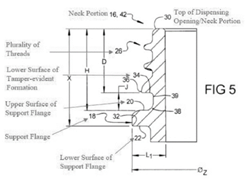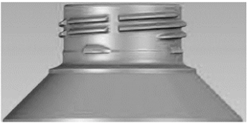The US Court of Appeals for the Federal Circuit, on petition for writ of mandamus, vacated the district court’s transfer order and remanded the transfer to be considered under the clarified parameters of Fed. R. Civ. P. 4(k)(2) and 28 U.S.C. § 1404. In re: Stingray IP Solutions, LLC, Case No. 2023-102 (Fed. Cir. Jan. 9, 2023) (Lourie, Taranto, Stark, JJ.)
Stingray filed patent infringement suits in the US District Court for the Eastern District of Texas against TP-Link, a company headquartered and organized in China. TP-Link moved to transfer to the Central District of California (CDCA) under 28 U.S.C. § 1406 citing an alleged lack of personal jurisdiction that Rule 4(k)(2) did not cure because TP-Link would be amenable to suit in the CDCA. TP-Link also moved for transfer under 28 U.S.C. § 1404(a). The district court granted the motion to transfer under § 1406 based on the rationale that TP-Link was amenable to suit in the CDCA and relying on affirmative reservations made by TP-Link that the CDCA had proper jurisdiction and venue. The district court denied TP-Link’s § 1404(a) motion as moot following the transfer. Stingray filed a mandamus petition asking the Federal Circuit to determine whether TP-Link’s unilateral, post-suit consent to personal jurisdiction in another state defeated application of Rule (4)(k)(2).
The Federal Circuit first determined that mandamus review was appropriate in this case in order to resolve the question of whether a defendant can defeat personal jurisdiction under Rule 4(k)(2) by unilaterally consenting to suit in a different district, a jurisdictional question that has divided district courts. Some district courts have held that personal jurisdiction cannot be established under Rule 4(k)(2) if a defendant states that it is amenable to suit in another state, while others have concluded that defendants must do more than simply designate an alternative forum in order to avoid application of Rule 4(k)(2).
Rule 4(k)(2) was originally introduced to close a loophole where non-resident defendants without minimum contact with any individual state suitable to support jurisdiction, but with sufficient contacts with the United States as a whole, were able to escape jurisdiction in all 50 states. The rule essentially provided that under federal claims, serving a summons or filing a waiver of service could establish personal jurisdiction if the defendant was not subject to a state’s general jurisdiction and exercising jurisdiction would be consistent with the US Constitution and laws.
Here, the case focused on the “negation requirement” of Rule 4(k)(2) where the defendant is not subject to any jurisdiction of a state court. This case addressed the question of whether a defendant’s post-suit, unilateral consent to suit in another state prevents the requirement that a defendant is not subject to a state’s general jurisdiction from being satisfied.
The Federal Circuit determined that the “negation requirement” requires defendants to identify a forum where jurisdiction would have been proper at the time of filing, regardless of consent. The Court determined that therefore a defendant cannot use a “unilateral statement of consent” to [...]
Continue Reading
read more


 Subscribe
Subscribe




